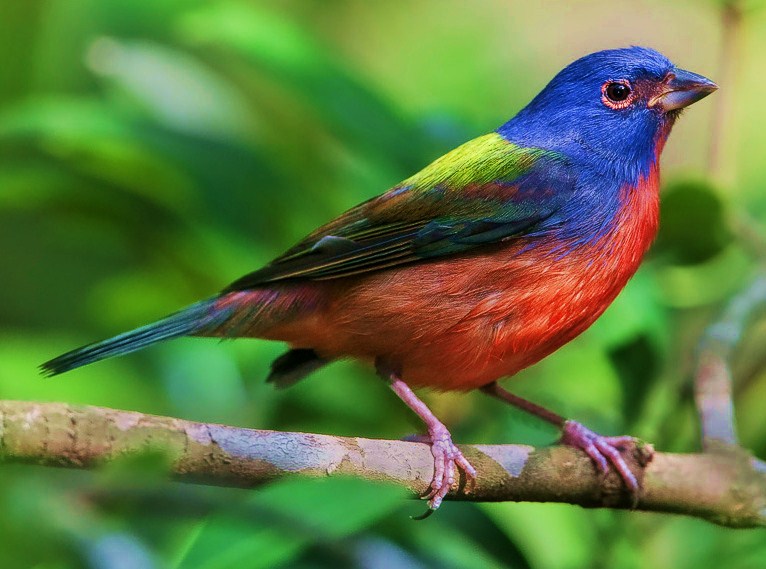Passerina ciris
 |
| Photo by Doug Janson (Wikipedia) |
Common name:
painted bunting (en); pintado (pt); passerin nonpareil (fr); azulillo pintado (es); papstfink (de)
Taxonomy:
Order Passeriformes
Family Cardinalidae
Range:
This North American species has two geographically disjunct populations. The western population breeds from northern Mexico to northern Texas, and winters in south-west Mexico. The eastern population breeds along the Atlantic coast of the United States, from North Carolina to Florida, and winters in southern Florida and the Caribbean.
Size:
These birds are 12-13 cm long and weigh 13-19 g.
Habitat:
The western population breeds in open areas with scattered brush, riparian thickets and shrubbery. The eastern population breeds in coastal scrubland and along the margins of maritime hammocks, but also in agricultural land. Both populations winter in tropical forest margins and tropical savanna.
Diet:
Painted buntings do most of their foraging on the ground. During the breeding season they mostly eat grasshoppers, caterpillars, spiders and snails, while during winter they are mostly granivorous, eating the seeds of grasses like Panicum, Amaranthus, Oxalis, Euphorbia and Carex.
Breeding:
These birds are mostly monogamous, but sometimes exhibit polygyny. They breed in April-August, with the females building the nest, a deep, neatly woven cup of plant fibres, lined with hair or fine grass. The nest is usually placed in low vegetation. The female lays 3-4 grey or bluish-white eggs with brown speckles, which she incubates alone for 11-13 days. The chicks are cared solely by the female and fledge 12-14 days after hatching. They typically raise 2 broods per season.
Conservation:
IUCN status – NT (Near-Threatened)
This species has a very large breeding range and a global population estimated at 4,5 million individuals. Still, the population has declined over the long term and apparently continues to do so at a moderately rapid rate, justifying the current threat status. The main threats affecting this species are the loss and intensification of habitat through urban development, road building and agricultural intensification, and capture for the cage bird trade.







